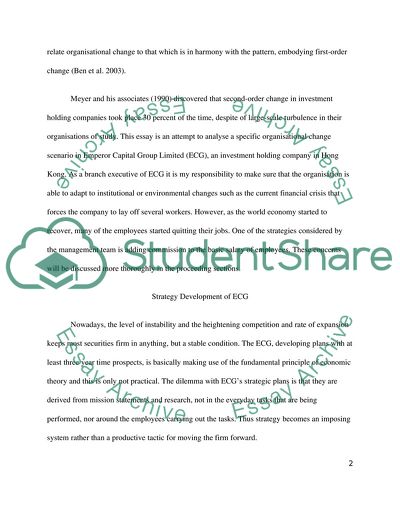Cite this document
(Strategy Development of ECG Essay Example | Topics and Well Written Essays - 3000 words, n.d.)
Strategy Development of ECG Essay Example | Topics and Well Written Essays - 3000 words. Retrieved from https://studentshare.org/finance-accounting/1742278-develop-a-critical-understanding-of-strategies-for-sustaining-organisational-effectiveness-and-managing-change
Strategy Development of ECG Essay Example | Topics and Well Written Essays - 3000 words. Retrieved from https://studentshare.org/finance-accounting/1742278-develop-a-critical-understanding-of-strategies-for-sustaining-organisational-effectiveness-and-managing-change
(Strategy Development of ECG Essay Example | Topics and Well Written Essays - 3000 Words)
Strategy Development of ECG Essay Example | Topics and Well Written Essays - 3000 Words. https://studentshare.org/finance-accounting/1742278-develop-a-critical-understanding-of-strategies-for-sustaining-organisational-effectiveness-and-managing-change.
Strategy Development of ECG Essay Example | Topics and Well Written Essays - 3000 Words. https://studentshare.org/finance-accounting/1742278-develop-a-critical-understanding-of-strategies-for-sustaining-organisational-effectiveness-and-managing-change.
“Strategy Development of ECG Essay Example | Topics and Well Written Essays - 3000 Words”, n.d. https://studentshare.org/finance-accounting/1742278-develop-a-critical-understanding-of-strategies-for-sustaining-organisational-effectiveness-and-managing-change.


